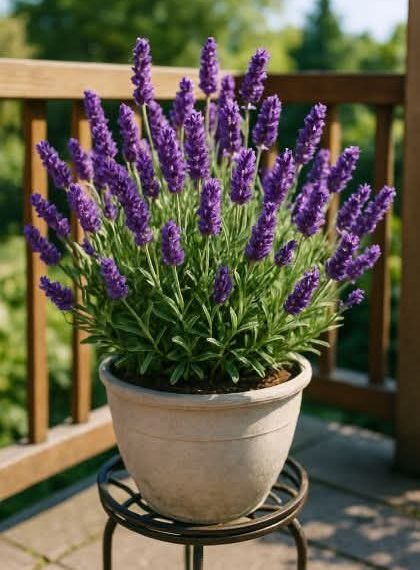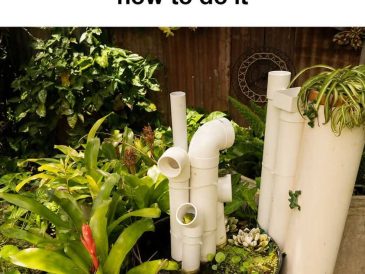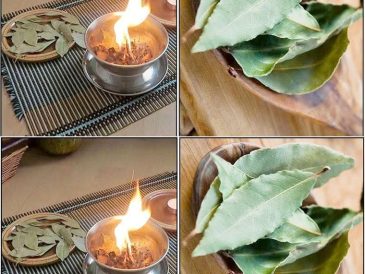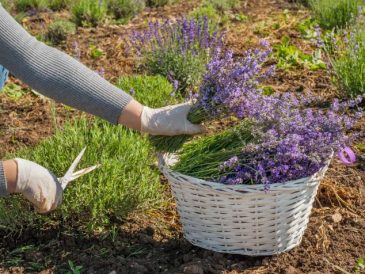Lavender is a beloved plant known for its fragrant aroma and beautiful purple blooms. Growing lavender in pots is an excellent way to enjoy this plant’s beauty and scent, even if you have limited garden space. With the right care and attention, you can cultivate a large, healthy lavender bush in a container that will thrive year after year.
In this guide, we’ll walk you through the process of growing the largest lavender bush possible in a pot. From selecting the right variety and pot to mastering watering and sunlight exposure, each step is crucial to ensuring your lavender plant flourishes. Whether you’re a seasoned gardener or a beginner, these tips will help you achieve stunning results.
1. Understanding Lavender Varieties Suitable for Pots
When it comes to growing lavender in pots, not all varieties are created equal. Some types of lavender are better suited for container gardening due to their size and growth habits. English lavender (Lavandula angustifolia) and French lavender (Lavandula dentata) are popular choices for pots because they tend to be more compact and manageable.
English lavender varieties such as ‘Hidcote’ and ‘Munstead’ are particularly well-suited for pots, as they typically grow to about 12 to 18 inches tall. These varieties are known for their hardiness and ability to thrive in a range of climates. French lavender, on the other hand, offers a unique appearance with its serrated leaves and can grow slightly larger, making it a striking choice for a container garden.
2. Choosing the Right Pot for Your Lavender
Selecting the right pot is crucial for the health and growth of your lavender plant. Lavender requires excellent drainage to prevent root rot, so choose a pot with multiple drainage holes at the bottom. A pot that is at least 12 inches in diameter and 12 inches deep will provide ample space for the roots to grow.
Terracotta pots are a popular choice for lavender because they are porous, allowing excess moisture to evaporate and preventing waterlogged soil. Additionally, the weight of a terracotta pot can help stabilize the plant, especially in windy conditions. Ensure that the pot is placed on a saucer to catch any excess water that drains out.
3. Selecting the Ideal Soil Mix for Lavender Growth
Lavender thrives in well-draining, sandy soil with a slightly alkaline pH. A good soil mix for lavender in pots includes a combination of potting soil, sand, and perlite or pumice to improve drainage. A recommended ratio is 70% potting soil, 15% sand, and 15% perlite.
To enhance the soil’s alkalinity, you can add a small amount of lime to the mix. This adjustment helps mimic the natural conditions of lavender’s native Mediterranean habitat. Avoid using heavy, clay-based soils, as they retain too much moisture and can lead to root rot.
4. Planting Lavender: Step-by-Step Instructions
Begin by filling your chosen pot with the prepared soil mix, leaving about an inch of space from the top. Remove the lavender plant from its nursery pot, gently loosening the roots if they are compacted. Place the lavender in the center of the pot, ensuring that the top of the root ball is level with the soil surface.
Fill in around the plant with additional soil mix, pressing gently to eliminate air pockets. Water the plant thoroughly after planting to help settle the soil. Be careful not to overwater; the soil should be moist but not soggy.
5. Watering Techniques to Maximize Growth
Lavender is drought-tolerant and prefers to dry out between waterings. Water your potted lavender deeply but infrequently, allowing the top inch of soil to dry out before watering again. This typically means watering once every two weeks, but frequency may vary depending on climate and pot size.
During the growing season, it’s important to adjust your watering schedule based on weather conditions. In hot, dry climates, you may need to water more frequently, while in cooler, humid areas, less frequent watering is necessary.
6. Ensuring Optimal Sunlight Exposure
Lavender requires full sun to thrive, so place your pot in a location that receives at least 6 to 8 hours of direct sunlight each day. If you are growing lavender indoors, consider placing it near a south-facing window or using grow lights to supplement natural sunlight.
Regularly rotate the pot to ensure all sides of the plant receive equal sunlight exposure, promoting even growth. If your lavender is not getting enough light, it may become leggy and produce fewer blooms.
7. Pruning Tips for a Bushier Lavender Plant
Pruning is essential for maintaining a bushy, healthy lavender plant. In the spring, trim back about one-third of the plant’s height to encourage new growth and remove any dead or damaged stems. Avoid cutting into the woody part of the plant, as this can inhibit new growth.
After the first bloom, perform a light pruning to remove spent flowers and encourage a second bloom. Regular pruning not only keeps the plant compact and tidy but also promotes more prolific flowering.
8. Fertilization Hacks for Healthier Lavender
Lavender is a light feeder and does not require heavy fertilization. In fact, too much fertilizer can lead to excessive foliage growth at the expense of blooms. Apply a balanced, slow-release fertilizer once in the spring as new growth begins.
Alternatively, you can use a diluted liquid fertilizer every 4 to 6 weeks during the growing season. Avoid high-nitrogen fertilizers, as they can encourage leafy growth rather than flowers.
9. Managing Pests and Diseases in Potted Lavender
Lavender is relatively pest-resistant, but it can occasionally be affected by aphids or spider mites. If you notice these pests, spray the plant with a mixture of water and mild soap or neem oil to control the infestation.
To prevent fungal diseases, ensure proper air circulation around the plant and avoid overhead watering. If you notice signs of root rot, such as wilting or yellowing leaves, reduce watering and improve drainage by adding more perlite to the soil mix.
10. Seasonal Care for Year-Round Growth
In colder climates, bring your potted lavender indoors during the winter to protect it from frost. Place it in a cool, bright location and reduce watering to prevent root rot. If you live in a mild climate, you can leave the pot outdoors, but consider wrapping it with burlap for added insulation.
In the spring, gradually acclimate your lavender to outdoor conditions by moving it to a sheltered spot for a few hours each day, increasing exposure over a week. This process helps prevent shock and prepares the plant for the growing season.
11. Common Mistakes to Avoid When Growing Lavender in Pots
One common mistake is overwatering, which can lead to root rot and plant decline. Always allow the soil to dry out between waterings. Another mistake is using the wrong soil type; ensure your soil mix is well-draining and not too rich in organic matter.
Additionally, avoid placing your lavender in a location with insufficient sunlight, as this can result in leggy growth and poor flowering. Finally, neglecting to prune can lead to a woody, unproductive plant, so make regular pruning a part of your care routine.





